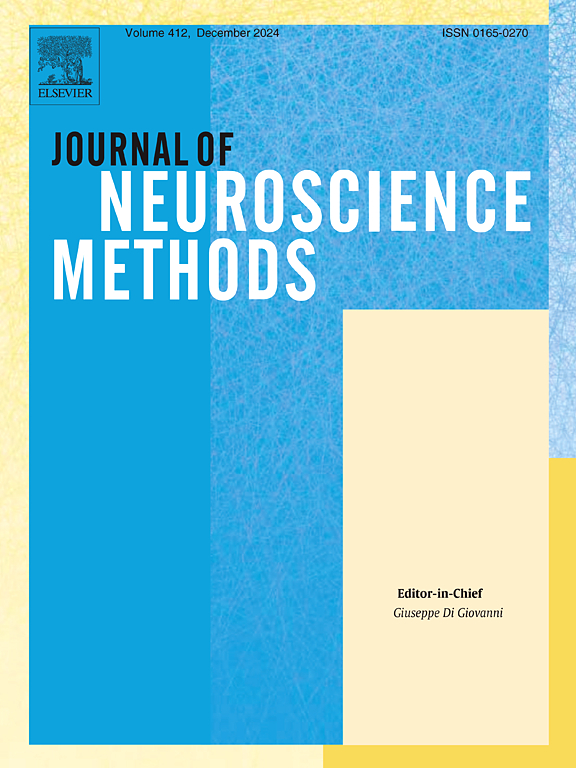Optimized methyl green-pyronin Y staining for layer visualization in frozen mouse cerebellum
IF 2.3
4区 医学
Q2 BIOCHEMICAL RESEARCH METHODS
引用次数: 0
Abstract
Background
Conventional histological stains, such as hematoxylin and eosin (H&E) or toluidine blue O (TBO), have a limited ability to clearly delineate the layered architecture of the cerebellar cortex.
New method
We applied methyl green–pyronin Y (MGP) staining, which is traditionally used for nucleic acid differentiation, to frozen mouse cerebellar sections to enhance visualization of cortical layers and neuronal subtypes.
Results
MGP staining yielded strong contrast between cell types: Purkinje cells stained distinctly pink, while granule cells appeared green. This enabled clear identification of cerebellar lamination and neuronal distribution.
Comparison with existing methods
In H&E or TBO staining, Purkinje and granule cells are colored similarly, which obscures layer boundaries. Although immunohistochemistry is commonly used to distinguish these cell types, MGP staining provides a rapid, color-based distinction without the need for antibodies or fluorescence.
Conclusions
MGP staining provides a fast and cost-effective alternative for analyzing cerebellar tissue, enabling clear visualization of cortical layering and facilitating the morphological screening of cerebellar abnormalities.
优化甲基绿-pyronin Y染色法在冷冻小鼠小脑层状可视化中的应用
传统的组织学染色,如苏木精和伊红(H&;E)或甲苯胺蓝O (TBO),在清晰描绘小脑皮层的分层结构方面能力有限。新方法采用传统的核酸分化方法甲基绿- pyronin Y (MGP)染色,对冰冻小鼠小脑切片进行染色,增强皮层层和神经元亚型的可视化。结果smgp染色显示细胞类型对比明显,浦肯野细胞呈明显的粉红色,颗粒细胞呈绿色。这可以清楚地识别小脑层压和神经元分布。与现有方法相比,在H&;E或TBO染色中,浦肯野细胞和颗粒细胞的颜色相似,模糊了层边界。虽然免疫组织化学通常用于区分这些细胞类型,但MGP染色提供了快速的、基于颜色的区分,而不需要抗体或荧光。结论smgp染色为小脑组织分析提供了一种快速、经济的方法,可以清晰地显示皮层分层,有助于小脑异常的形态学筛查。
本文章由计算机程序翻译,如有差异,请以英文原文为准。
求助全文
约1分钟内获得全文
求助全文
来源期刊

Journal of Neuroscience Methods
医学-神经科学
CiteScore
7.10
自引率
3.30%
发文量
226
审稿时长
52 days
期刊介绍:
The Journal of Neuroscience Methods publishes papers that describe new methods that are specifically for neuroscience research conducted in invertebrates, vertebrates or in man. Major methodological improvements or important refinements of established neuroscience methods are also considered for publication. The Journal''s Scope includes all aspects of contemporary neuroscience research, including anatomical, behavioural, biochemical, cellular, computational, molecular, invasive and non-invasive imaging, optogenetic, and physiological research investigations.
 求助内容:
求助内容: 应助结果提醒方式:
应助结果提醒方式:


